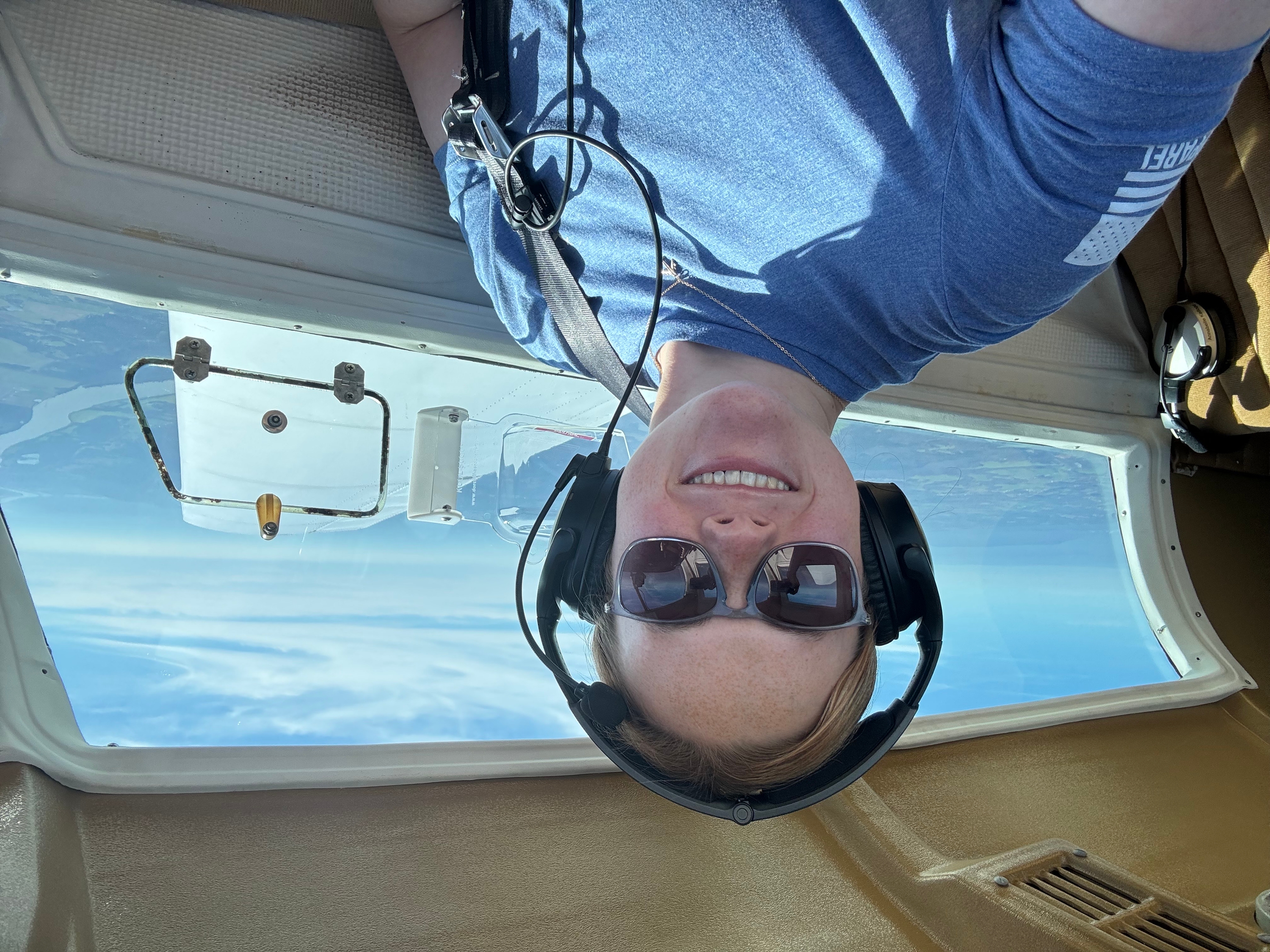Wing Woman: MGA Student To Compete In 2025 Air Race Classic
Author: Sheron Smith
Posted: Friday, May 9, 2025 12:00 AM
Categories:
Pressroom | Events- Students | School of Aviation | Students
Macon, GA

MGA student Annabelle Kellogg at the controls of her 1965 Mooney M20E. She's competing in the 2025 Air Race Classic, which will cover about 2,400 miles over four days.
About three years ago, hoping to help her shake off lingering post-pandemic cabin fever, Trish Kellogg bought her 17-year-old daughter, Annabelle, a ticket on a helicopter discovery flight.
That ticket ended up costing Trish and her husband, Brad, a bit more money than they could have imagined at the time – not that they’re complaining. The aviation bug bit their daughter hard, and just two months after the discovery flight she was taking private flying lessons at an airport close to the family’s Cumming, Ga., home.
Since then, Kellogg’s earned her private pilot certificate and recently completed her instrument rating. With her parents’ help, she bought her own airplane, a 1965 Mooney M20E. After graduating high school, she enrolled at Middle Georgia State University (MGA), where she just finished her sophomore year pursuing her bachelor’s degree in aviation in the management track.
And now, at age 20, she’s getting ready for an unforgettable summer adventure: competing in the 2025 Air Race Classic, a competition for female pilots that traces its roots to the first Women’s Air Derby in 1929 - a race that counted aviation pioneer Amelia Earhart among its participants.
Considering how life-changing that discovery flight turned out to be, it’s hard to believe Kellogg’s mother had to coax her into getting on the helicopter to begin with.
“I was a little terrified to get into that small aircraft,” Kellogg said. “But as soon as we left the ground, I was hooked.”
The Race
The annual Air Race Classic is a celebration of women in aviation, combining flying skill, strategy, and endurance.
The race typically covers around 2,400 miles and lasts four days, with pilots flying daylight hours only. Each team, made up of at least two women, flies a small, propeller-driven plane and must follow a pre-established route with multiple checkpoints along the way.
What makes the race unique is that it's not about who finishes first - it's a handicapped race, meaning each plane is scored based on how well it performs relative to its own capabilities. This levels the playing field between faster and slower aircraft, and rewards precision, planning, and piloting skill over speed alone.
This year’s race is scheduled for June 17-20, beginning at H.L. “Sonny” Callahan Airport in Fairhope, Ala., and ending at Felts Field in Spokane, Wash. In between are stops in Mississippi, Arkansas, Kansas, Colorado, Wyoming, Idaho, and Oregon.
Twelve colleges or universities with flight schools are fielding a total of 18 teams, while some participants, like Kellogg, are competing individually.
“I knew this would be a once-in-a-lifetime experience,” Kellogg said. “It will push me out of my comfort zone in the best way. I’ve been preparing since early January, juggling school, flying, aircraft readiness, required training, briefings, and paperwork. It’s been a major time commitment, but absolutely worth it.”
Kellogg is flying with a seasoned co-pilot, Gretchen Jahn, who has 26 prior Air Race Classic competitions under her belt.
“I’ll be pilot in command, while Gretchen will handle radio communications, monitor terrain and weather, manage airspace conflicts, and brief our airport flybys,” Kellogg said. “My job will be to fly the most efficient route possible, holding consistent altitude, airspeed, and heading across the course. It’s all about flying a near-perfect cross-country flight.”
She said she’s looking forward to making friends and aviation contacts along the way and strengthening her overall skill as a pilot.
“My biggest challenge will likely be managing fatigue and staying on top of time zones and daylight restrictions,” Kellogg said. “Since it’s a day-VFR (visual flight rules) race only, making timely landings before sunset is critical.”
The Future
While she’s gotten her flight training through private instruction to this point, Kellogg said she’s impressed with the ground schooling she’s received through MGA’s School of Aviation.
“Classes like aviation meteorology and regulations gave me a strong foundation in planning and safe operations,” Kellogg said. “My human factors course helped me understand physical and mental limitations – something especially important in a high-demand event like the Air Race Classic.”
She wants an aviation career but is still considering her options in such a wide-ranging field. Kellogg is primarily interested in becoming an air ambulance pilot but hasn’t ruled out pursuing a commercial license and working for a regional airline or becoming a certified flight instructor.
She also wants to learn how to fly helicopters and said she would likely seek that training through MGA, which offers airplane and helicopter piloting instruction through the flight track of the Bachelor of Science in Aviation Science & Management.
“I’m really still exploring what I’d like to do,” Kellogg said. “It’s insane how many great opportunities there are in aviation.”
For anyone who plans to follow her progress in the Air Race Classic, especially girls and young women, she hopes her experience encourages them to “go after hard things.
“If something scares you or seems out of reach, that’s all the more reason to go for it,” Kellogg said. “Don’t let fear or the opinions of others limit what you believe you can achieve. Keep trying, especially when it’s tough.”
